McLaren 720S Spider Review


FAST FACTS
| Engine: | 4.0-liter twin-turbo V8 |
| Output: | 710 hp, 568 lb-ft of torque |
| Transmission: | Seven-speed dual clutch transmission |
| 0-62 (100km/h): | 2.9 seconds |
| 0-124 MPH (200 km/h): | 7.9 seconds |
| Quarter mile time: | 10.4 seconds |
| Top Speed: | 202 MPH (325 km/h) |
| Price (USD): | $315,000 |
| Price (CAD): | $350,000 |
It takes just one look at the McLaren to understand that it’s special. This 720S Spider is not only focused on being the prettiest thing around, but it’s also designed to be the most engaging yet easiest to drive supercar out there.
That’s a rare combination in this world. Look at supercars like the Lamborghini Aventador S, which is obnoxiously large and difficult to see out of. It has a single clutch transmission that is full of character but janky to use. The Acura NSX is a delightfully fast and easy car to drive, but it lacks emotional engagement. The Ford GT is a race car for the road with a weird sounding engine, and the Ferrari 488 Pista Spider is getting a little long in the tooth. The McLaren combines the best elements of all supercars in its own way, and also offers the 720S as a droptop to boot.
Get a Quote on a New McLaren 720STaking a performance car and chopping the roof off doesn’t typically bode well in terms of rigidity and stiffness, two things needed to maximize the potential of a supercar. Adding a power retractable hardtop mechanism is bound to bring weight to a spot that isn’t ideal, higher up on the body, which usually results in a change in the center of gravity, which again impacts the performance.

However, the 720S Spider gains only 100 lbs over its hardtop counterpart. That’s because of the “Monocage II-S” chassis, which is so rigid that McLaren hardly had to do any bracing to take the top off. In fact, the Coupe and the Spider were essentially engineered in tandem, until a critical moment in the vehicle’s development required resources to be called for the coupe to be finished. As a result, the two cars are almost identical, especially their carbon fiber cores. Now, every one of the cars mentioned above uses carbon, but few have as much experience with it as McLaren, which has been using it in F1 since the early ’80s.
Get the Flash Player to see this player.
Besides the rooflessness of the Spider, you’ll immediately note another special part of the car: the cantrails, or flying buttresses of the 720S Spider… Those are weird words that may not resonate with everyone, so it’s best described as a C-Pillar. They start behind the headrests that stretch down the rear deck of the supercar. Not only are they functional design elements that guide air over the rear deck to add downforce without introducing drag, but they’re see-through. That allows for maximum visibility, something that pretty much no supercar — convertible or not — is known for.
ALSO SEE: Top 15 Best LEGO Car Sets
The 720S Spider truly brings the driver closer to the world around them. Poke a button on the dash and the roof disappears in 11 seconds flat. And you aren’t even in the dark with the roof up, since it can be outfitted with a trick electrochromic glass, which allows it to toggle between low and high tint. It’s like magic. The roof can be operated at up to 31 MPH, which is a huge improvement over the 18 MPH limitation of the 650S Spider that this car replaces.

The Spider also gets the driver closer to the sound of the engine. Sure the 4.0-liter twin-turbo V8 doesn’t sound as interesting or exciting as other supercars, but it has a tune of its own that will still turn heads. That is, if the heads can keep up with the car.
The vehicle makes 710 horsepower and 568 lb-ft of torque, allowing it to hit 60 MPH in 2.8 seconds (100 km/h in 2.9), 124 MPH (200 km/h) in less than eight seconds and an insane 186 MPH in 22.4 seconds. The top speed is 212 MPH (341 km/h) with the roof up and 202 MPH with the roof down. The convertible will break through the quarter-mile mark in just 10.4 seconds. These numbers are absurd. But the feeling of this much power is fantastic. Imagine the joy and giggles you get from seeing whatever your favorite thing in the world is — be it a crush, a pet, an award, or a bank account with lots of numbers — the 720S Spider will bring out the same emotions with a firm press of the throttle.
See Also: 2019 McLaren 600LT Spider Review
Driving at speed is easy too. The Spider will happily cruise at the posted highway speed limit, without any uncomfortable bucking or egging you on to do more. Granted, you’ll go faster even without realizing it, but that is the calling card of a very refined car. The transmission is solid, a seven-speed dual clutch with plenty of bite to let you feel each gear change, but not so much you would complain about it.

There are three modes for the powertrain and chassis. Spend just a few minutes in each of the three settings (Comfort, Sport, and Track) and you’ll quickly understand just how much variability the 720S Spider offers.
Comfort mode is legitimately usable for longer trips, as the suspension and steering feedback is less invasive. Sport dials things up a bit, and you get much more feedback, especially through your fingertips on the steering wheel. The McLaren uses an electro-hydraulic power assisted steering setup that prioritizes that feedback and feel. It feels raw and perfectly driver oriented.
The Track mode turns things up again, making the ride stiffer, so you can not only feel the road and level of grip through the steering wheel but the chassis as well. This would be a huge help on the track. In addition to the proactive chassis control, which monitors the road conditions and the car constantly, track mode helps the car lay down a fast lap on a smooth, wet, or bumpy circuit. The only complaint I have about the 720S Spider is how the brakes behave. They require a very firm press to get any action, and it feels like most of the pedal is lifeless until you’re practically standing on it. Obviously, the brakes work very well, but the modulation and energy required to work them is a curious contrast to how other cars behave.
READ MORE: How the McLaren 720S Helped Me Live My Crazy Rich Asian Fantasy
For those focused on the track, the car will accommodate you. Press a button and the digital gauge cluster folds and retracts into the dashboard showing you a slim tach and speedometer. The low weight of about 3,200 lbs combined with the incredible powerplant and high tech suspension means that this car will be a blast in any situation.
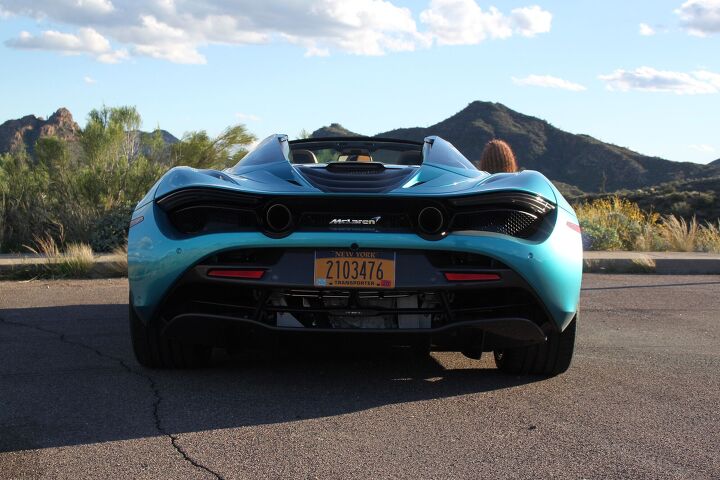
The interior is focused but can be outfitted and upgraded in a number of ways. The tester we had featured a luxury package, and as such many of the surfaces were wrapped in a high grade stitched leather, which looks superb. Driver and passenger are treated to well bolstered and supportive thrones. They’re power adjustable, which is handy, since other, more focused vehicles in the McLaren lineup, like the 600LT, don’t have as many creature comforts. That said, there are a lot of awkward controls that seem out of place in a car that makes so much capability so easy to live with. For example, the mirror controls are in a weird spot, practically under the dash, hidden behind the steering wheel.
But these are small problems when compared against all the ways in which the 720S Spider impresses. The exterior is one of the most impressive parts of the car. The sleek body is a complete work of art from front to end. Every shape is designed to deliver more performance, more aerodynamic downforce and less drag. The rear of the car features a full-width spoiler that integrates nicely into the bodywork. The spoiler even works with the roof too, operating in a different way than the Coupe would. The rear deck of the 720S Spider is lower than the 650, and visibility is a huge advantage in this car, and that comes without any compromise of the performance and design. I should mention that driving the Lamborghini Aventador S Roadster was a headache at times with its windshield that was far too raked to see out of, and its obnoxiously wide body that made every move feel suspicious. The McLaren was so much more refined and easier to live with.
It’s amazing that even the A-Pillars are slim. When you park, McLaren though about the entrance and exit: the door hinges have been redesigned with repositioned gas struts for better access. I’m not a huge fan of the headlight design, but it combines an intake into McLaren’s light signature, so it’s more functional than fashionable.

The Verdict: McLaren 720S Spider Review
For $315,000 USD ($350,000 CAD) you can get into one of the most complete supercar experiences available. It’s an uncompromised high-performance machine that is capable of achieving blistering lap times, but it’s also a comfortable, easy to use a car, that’s perfect for highway cruising or driving around town.
Discuss this story at our McLaren Forum
LOVE IT
- Incredible performance
- Comfortable ride
- Great visibility
LEAVE IT
- Awkward braking feel

Sami has an unquenchable thirst for car knowledge and has been at AutoGuide for the past six years. He has a degree in journalism and media studies from the University of Guelph-Humber in Toronto and has won multiple journalism awards from the Automotive Journalist Association of Canada. Sami is also on the jury for the World Car Awards.
More by Sami Haj-Assaad














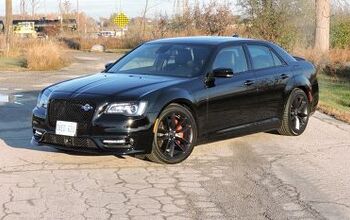
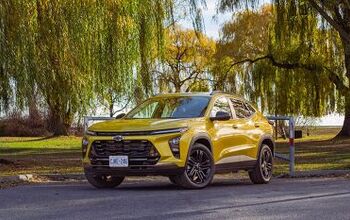
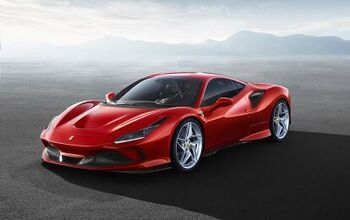
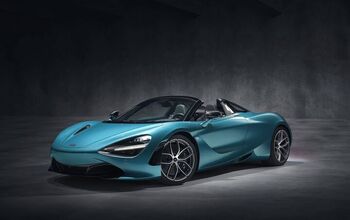
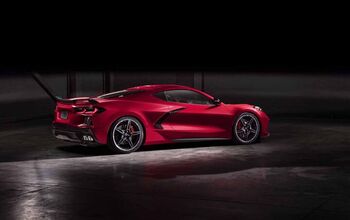
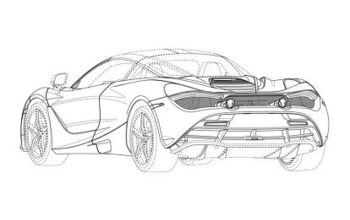






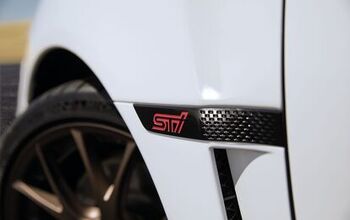




Comments
Join the conversation